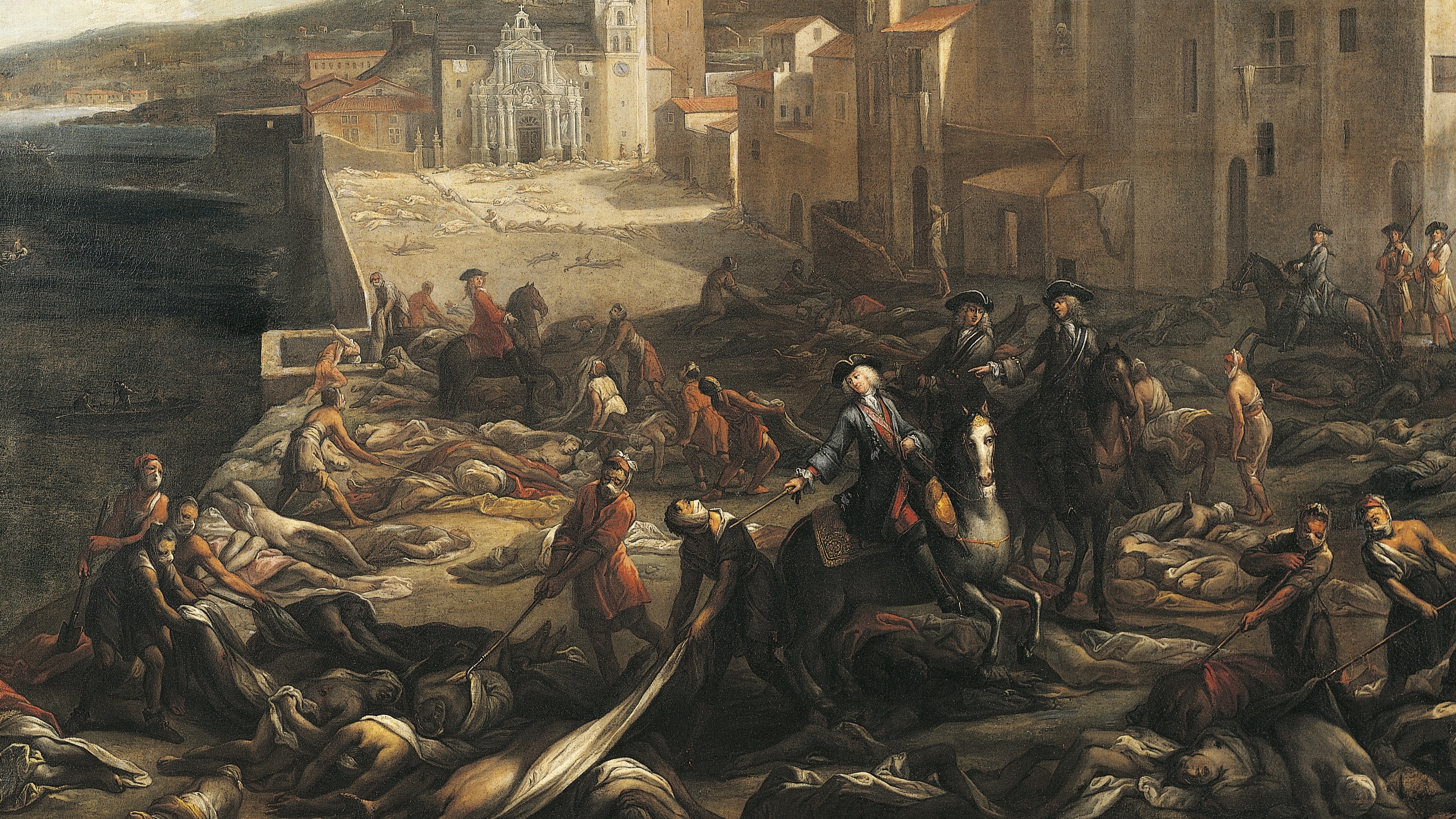Historians and scientists have long been puzzled by the movement of a devastating plague that spread from Europe into Asia around four millennia ago. This ancient disease, now known to be an early form of the bacterium Yersinia pestis, has remained a prominent scientific enigma. The question of how a pathogen could traverse such vast distances in an era of limited transportation has been a major point of inquiry. However, recent scientific breakthroughs in the field of paleogenetics are now offering a compelling new theory that may finally explain this remarkable spread.
This new hypothesis suggests that the plague’s spread was not due to a single, explosive event, but rather a more complex process tied to a specific, and surprising, vector: domesticated livestock. According to a study published in the journal Cell, an international team of researchers recovered the first ancient Yersinia pestis genome from a non-human host, a 4,000-year-old domesticated sheep. This groundbreaking discovery points to the crucial role that nomadic pastoralists and their herds played in transporting the disease across the vast Eurasian landmass.
The discovery contradicts earlier beliefs that the Bronze Age plague was mostly transmitted directly between people or through fleas and rodents, a mode of transmission that emerged much later. The ancient version of the bacteria identified in the sheep was missing the genetic components needed for transmission via fleas. Consequently, researchers propose that the illness was zoonotic, transferring from an unidentified wild animal source to domesticated animals such as sheep, and eventually to humans. The bacteria’s presence in a sheep at an archaeological location in what is now Russia, combined with a closely matching strain found in a nearby human grave, offers a significant connection.
The human component of this concept is connected to the wandering societies of the Eurasian Steppe. These herding groups, recognized for their extensive animal husbandry and far-reaching movements, likely stayed in frequent, intimate contact with their livestock. Enabled by the recently tamed horse, their nomadic way of life allowed them to transmit the disease across various areas, transforming their flocks into traveling sources for the plague. As such, the rise of these extremely mobile communities was not merely a cultural change; it was also a key driver in the transmission of diseases.
This new evidence provides a more nuanced understanding of how ancient epidemics could have shaped human history. Rather than being a disease of dense urban populations, as the later Black Death was, this Bronze Age plague was a disease of a highly connected, mobile society. The discovery suggests that large-scale human migrations and the rise of pastoralism were not just drivers of cultural change and genetic mixing, but also critical factors in the geographical spread of infectious diseases.
The methodical scientific approach utilized in this revelation highlights the significance of studying ancient DNA. Scientists meticulously retrieved and decoded genetic content from numerous ancient human and animal artifacts. A significant and unusual breakthrough occurred with the detection of Yersinia pestis in the tooth of a sheep, representing the inaugural instance of this pathogen being identified in non-human remains from that period. This process has introduced fresh possibilities for comprehending how ancient pathogens evolved and interacted with human and animal hosts.
This study also carries important consequences for contemporary epidemiology. By examining the evolution and adaptation of ancient pathogens such as Yersinia pestis to various hosts and environments, researchers can gain a deeper insight into the dynamics of current disease emergence. The insight from 4,000 years past is that the interconnection of human and animal communities, especially regarding trade and migration, consistently poses a risk factor for disease outbreaks. It highlights that pandemics have been a persistent and significant aspect of human historical development.
The story of the Bronze Age plague is far more than a tale of a single pathogen. It is a narrative that fundamentally alters our understanding of human history and migration during this pivotal era. The discovery of the pathogen’s presence at all is remarkable, given the lack of historical records from that period. However, archaeological findings have long hinted at a massive societal disruption, with evidence of widespread population collapse and shifts in burial practices, pointing to an unknown crisis that decimated communities. The new genetic evidence now offers a plausible explanation for these historical anomalies.
The team of researchers, composed of scientists from institutions across Europe, meticulously analyzed genetic material from the remains of both humans and animals across multiple Eurasian burial sites. The breakthrough came from the archaeological site in modern-day Russia’s Samara region, where the ancient sheep remains were found. This discovery was particularly significant because it provided a clear link between a non-human host and the plague, something that had previously been a missing piece of the puzzle. The presence of the bacterium in the sheep’s tooth, a part of the body that preserves DNA particularly well, was a key piece of the puzzle.
The genomic study showed that this old strain of Yersinia pestis was a very primitive form of the bacterium. It missed the specific genes, like the Ymt gene, that allow the microorganism to persist in the intestines of fleas, which is necessary for the type of spread observed in bubonic plague. This marks a vital difference, suggesting that the illness was primarily transmitted through direct interaction with infected animals or people, potentially via respiratory droplets (pneumonic plague). Such a transmission method would have been particularly effective within the cohesive, mobile herding communities of the Eurasian Steppe, where people and their livestock coexisted closely.
The rise of these pastoralist cultures, especially the Yamnaya people, was a major demographic event of the Bronze Age. These groups, who are the ancestors of many modern Europeans, expanded rapidly across the continent, bringing with them new technologies like the wheel and the domesticated horse. This expansion created a new kind of interconnectedness, as people and goods could travel much faster and farther than ever before. The discovery in the sheep suggests that this era of rapid human mobility inadvertently created the perfect conditions for a highly infectious disease to spread across an entire continent. The migration of people became the migration of the plague.
The effect of this old plague on societies from the Bronze Age was probably significant. As groups interacted and traveled, the illness could have quickly spread, leading to severe outbreaks within local areas. The archaeological and genetic signs of population bottlenecks and abrupt changes in burial locations during this time match perfectly with the destructive impact of a widespread epidemic. It is completely feasible that the plague served as a strong selective force, shaping the path of human evolution and the genetic composition of later populations in Europe and Asia.
The approach taken in this research, called paleogenomics, showcases the significant advances science has achieved in exploring the ancient world. By extracting and studying damaged DNA from historical remains, researchers can now reconstruct a portrait of not only the identities of ancient individuals but also the illnesses they encountered. This effort is meticulous but incredibly rewarding, delivering an amount of detail that was beyond belief not long ago. It offers a novel and compelling perspective to examine the far-off past.
The examination of this ancient plague goes beyond being merely an academic pursuit. It holds significant importance for contemporary public health. By delving into the evolutionary background of a perilous pathogen like Yersinia pestis, we can obtain a deeper understanding of how pathogens arise, adjust to new hosts, and increase in severity as time progresses. This historical viewpoint is crucial for forecasting and getting ready for future pandemics, acting as a potent reminder that combating infectious diseases is a perpetual challenge that has been influencing human history for thousands of years.



:max_bytes(150000):strip_icc():focal(990x194:992x196)/Nasa-crew-9-landing-031825-2-972dcdafbfc14d38be860798fa5a6c16.jpg)



